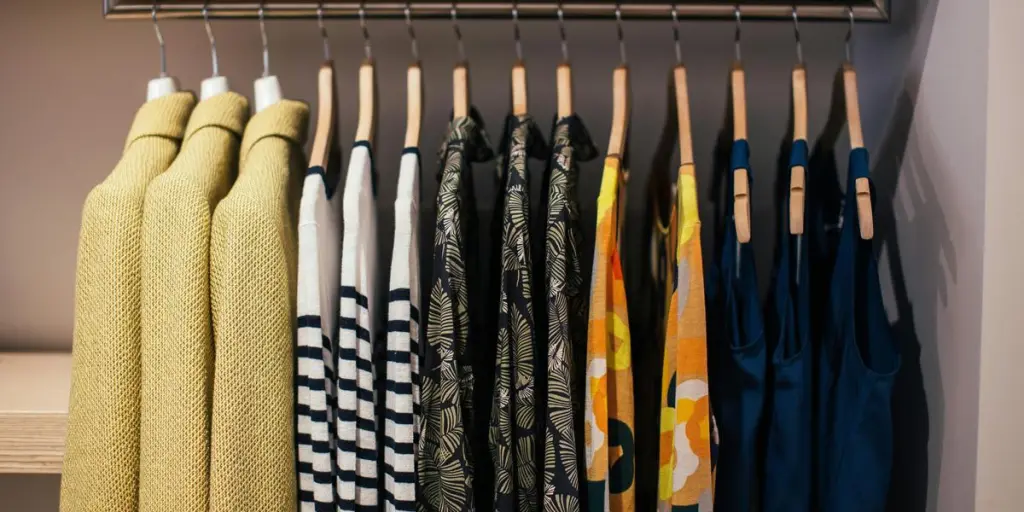Striped cardigans have become a beloved staple in the fashion industry, offering a blend of classic charm and modern appeal. As versatile pieces, they cater to a wide range of styles and preferences, making them a must-have in wardrobes around the globe. This article delves into the market trends, key players, and future predictions for striped cardigans, highlighting their growing popularity and significance in the apparel and accessory industry.
Table of Contents:
Market Overview: The Rising Popularity of Striped Cardigans
Design and Patterns: The Allure of Stripes
Materials and Fabrics: Comfort Meets Style
Seasonality and Functionality: Versatile Wardrobe Staples
Cultural Influence and Heritage: Stripes Through the Ages
Conclusion
Market Overview: The Rising Popularity of Striped Cardigans

The market for striped cardigans has seen a significant surge in recent years, driven by a combination of fashion trends, consumer preferences, and market dynamics. According to Research and Markets, the global fashion retailing market, which includes clothing and apparel, is expected to continue its growth trajectory, with striped cardigans playing a pivotal role in this expansion.
Data of Market Performance
The fashion retailing market, encompassing clothing and apparel, has shown robust growth, with a notable increase in demand for versatile and stylish pieces like striped cardigans. According to Research and Markets, the market is projected to grow from USD 3.87 billion in 2023 to USD 4.04 billion in 2024, with a compound annual growth rate (CAGR) of 4.35%, reaching USD 5.22 billion by 2030. This growth is fueled by higher disposable incomes, the luxury appeal of fashion items, and a globally fashion-aware demographic.
Regional Insights
The popularity of striped cardigans varies across different regions, reflecting diverse cultural influences and fashion preferences. In the Americas, particularly in the United States, there is a strong market driven by consumers’ affinity for stylish and comfortable clothing. The Asia-Pacific region, led by China, is experiencing a surge in demand due to increased wealth and a focus on quality and sustainability in fashion. Europe, with its emphasis on high-quality and sustainably sourced apparel, also shows a strong preference for striped cardigans, while the Middle East thrives on luxury and exclusivity.
Key Players
Several key players dominate the striped cardigan market, each contributing to its growth and innovation. Leading brands such as Burberry, Hermès, and LVMH Moët Hennessy Louis Vuitton have made significant strides in incorporating striped cardigans into their collections, blending traditional craftsmanship with contemporary designs. These brands, along with others like Uniqlo and Zara, continue to set trends and influence consumer preferences, ensuring the sustained popularity of striped cardigans.
Future Trends
The future of striped cardigans looks promising, with several trends shaping their evolution. Sustainability and eco-friendly practices are becoming increasingly important, with brands focusing on ethical sourcing and production methods. Innovations in fabric blending and design are also on the rise, offering consumers more durable and stylish options. Additionally, the shift towards digital channels and e-commerce is transforming the shopping experience, making striped cardigans more accessible to a global audience.
Design and Patterns: The Allure of Stripes
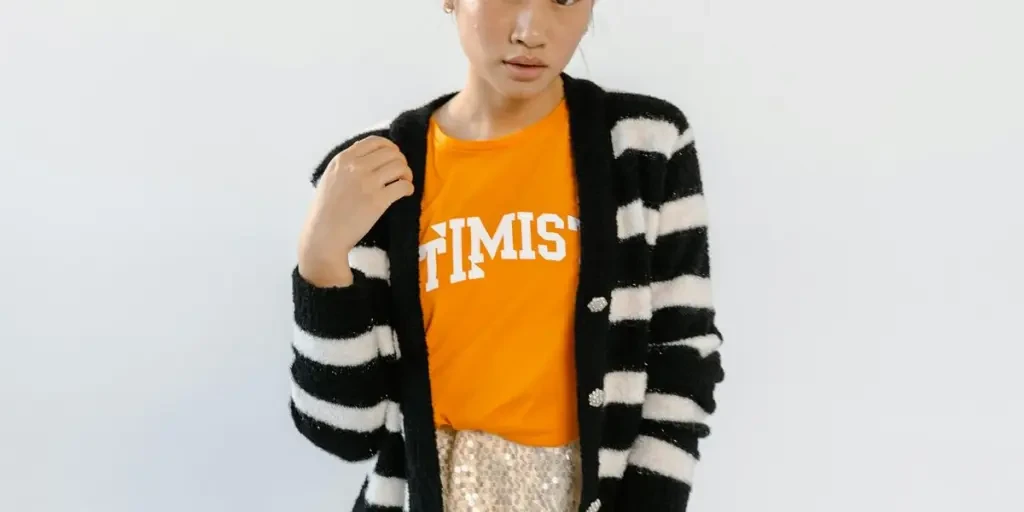
Classic vs. Modern Stripes: A Design Evolution
The striped cardigan has undergone a significant evolution over the years, transitioning from classic to modern interpretations. Traditionally, stripes have been a staple in fashion, often associated with nautical themes and preppy styles. The classic striped cardigan typically features horizontal stripes in neutral colors such as navy, white, and black. These designs are timeless and versatile, making them a popular choice for both casual and formal settings.
In recent years, however, there has been a shift towards more modern interpretations of stripes. Designers are experimenting with bolder colors, varying stripe widths, and innovative patterns. According to a professional report, the S/S 25 catwalks showcased a range of striped cardigans that blend classic elements with contemporary twists. Brands like Dolce & Gabbana and Hermès have embraced this trend, incorporating vibrant hues and unique stripe arrangements to create eye-catching pieces that appeal to a broader audience.
Pattern Variations: From Bold to Subtle
The versatility of striped cardigans lies in the wide range of pattern variations available. From bold, statement-making stripes to subtle, understated designs, there is a striped cardigan to suit every taste and occasion. Bold stripes often feature contrasting colors and wide bands, making them a focal point of any outfit. These designs are perfect for those looking to make a fashion statement and add a pop of color to their wardrobe.
On the other hand, subtle stripes offer a more refined and sophisticated look. These patterns typically feature narrower stripes in complementary colors, creating a more cohesive and elegant appearance. Subtle stripes are ideal for those who prefer a more understated style, as they can be easily paired with other wardrobe staples without overwhelming the overall look. The S/S 25 collections from brands like Missoni and Canali highlight the beauty of subtle stripes, showcasing their ability to add depth and texture to a garment without being overly flashy.
Materials and Fabrics: Comfort Meets Style
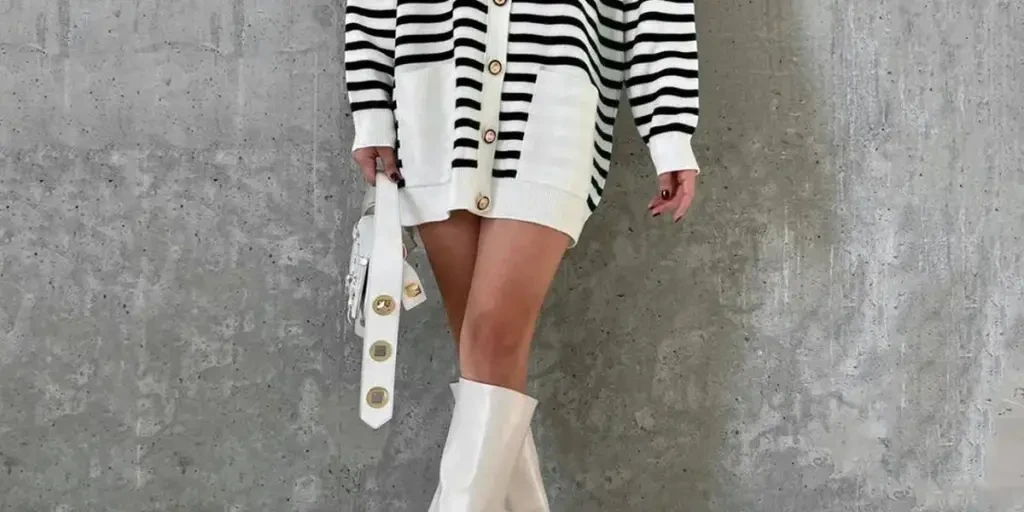
Natural Fibers: Cotton and Wool
When it comes to materials, natural fibers such as cotton and wool are popular choices for striped cardigans. Cotton is a lightweight and breathable fabric, making it ideal for warmer weather. It is also soft and comfortable against the skin, ensuring that the wearer remains comfortable throughout the day. Wool, on the other hand, is a more insulating material, providing warmth and coziness during colder months. Wool cardigans are often favored for their durability and ability to retain heat, making them a practical choice for winter wear.
The use of high-quality natural fibers is a key factor in the appeal of striped cardigans. According to a professional report, the S/S 25 collections from brands like Prada and Fendi emphasize the importance of using premium materials to create garments that are not only stylish but also comfortable and long-lasting. By investing in high-quality cotton and wool, designers can ensure that their striped cardigans remain a staple in their customers’ wardrobes for years to come.
Synthetic Blends: Durability and Affordability
In addition to natural fibers, synthetic blends are also commonly used in the production of striped cardigans. These blends often combine materials such as polyester, nylon, and acrylic with natural fibers to create fabrics that are both durable and affordable. Synthetic blends offer several advantages, including increased resistance to wear and tear, reduced shrinkage, and enhanced color retention. These properties make synthetic blends an attractive option for those seeking a cost-effective and low-maintenance garment.
The S/S 25 collections from brands like JW Anderson and Moschino highlight the benefits of synthetic blends in creating stylish and practical striped cardigans. By incorporating synthetic fibers into their designs, these brands can offer garments that are not only fashionable but also resilient and easy to care for. This combination of style and functionality makes synthetic blend cardigans a popular choice for modern consumers.
Seasonality and Functionality: Versatile Wardrobe Staples
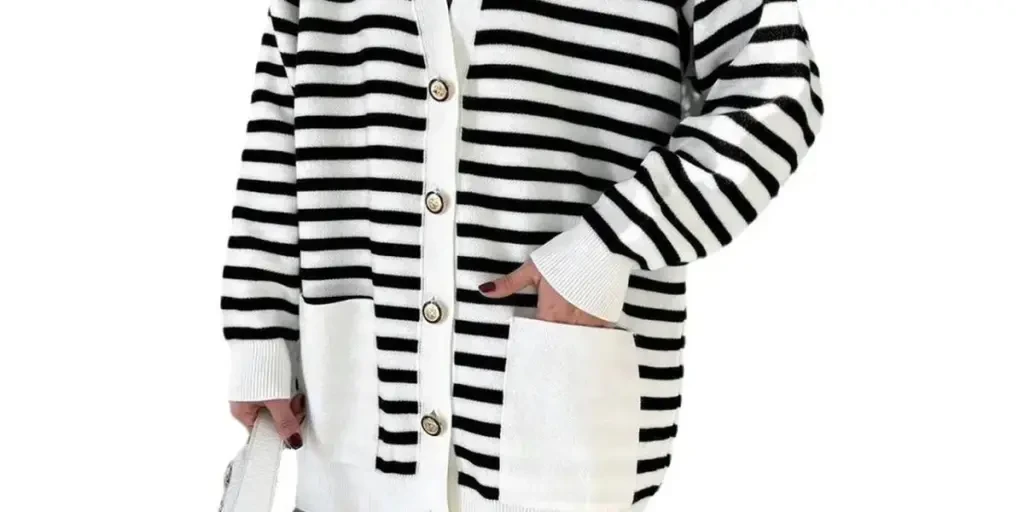
Year-Round Appeal: Layering for All Seasons
One of the key advantages of striped cardigans is their versatility, making them suitable for year-round wear. These garments can be easily layered to adapt to different weather conditions, providing both warmth and style. In the spring and summer, lightweight cotton cardigans can be worn over a simple t-shirt or tank top, offering a stylish way to stay comfortable during cooler evenings. In the fall and winter, thicker wool cardigans can be layered over long-sleeve shirts or under jackets, providing an extra layer of insulation against the cold.
The transseasonal appeal of striped cardigans is evident in the S/S 25 collections from brands like Ralph Lauren and Zegna. These collections showcase a range of cardigans designed to be worn throughout the year, emphasizing the importance of layering and adaptability in modern fashion. By offering garments that can be easily integrated into any wardrobe, designers can ensure that their striped cardigans remain a staple for their customers, regardless of the season.
Practical Features: Pockets, Buttons, and More
In addition to their stylish designs, striped cardigans often feature practical elements that enhance their functionality. Pockets, buttons, and other details can add both visual interest and utility to a garment, making it more versatile and user-friendly. Pockets, for example, provide a convenient place to store small items such as keys or a phone, while buttons allow the wearer to adjust the fit and style of the cardigan to suit their preferences.
The S/S 25 collections from brands like Joeone and Doublet highlight the importance of practical features in creating functional and stylish striped cardigans. By incorporating elements such as pockets and buttons into their designs, these brands can offer garments that are not only fashionable but also practical and convenient for everyday wear. This focus on functionality ensures that striped cardigans remain a popular choice for modern consumers seeking both style and utility in their clothing.
Cultural Influence and Heritage: Stripes Through the Ages
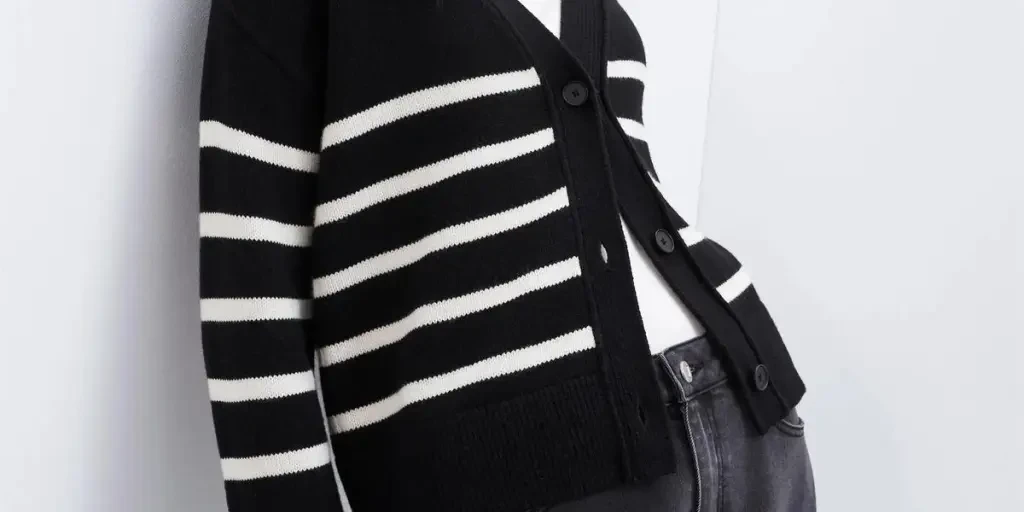
Historical Significance: Stripes in Fashion History
Stripes have a long and storied history in the world of fashion, with their origins dating back to ancient times. Historically, stripes were often associated with social status and were used to signify rank or occupation. In medieval Europe, for example, striped clothing was worn by prisoners and outcasts, while in the 19th century, stripes became popular in nautical uniforms, symbolizing the maritime heritage of sailors.
The historical significance of stripes is reflected in the S/S 25 collections from brands like Giorgio Armani and Wales Bonner. These collections draw inspiration from the rich history of stripes, incorporating elements of traditional designs into modern garments. By paying homage to the past, designers can create striped cardigans that are not only stylish but also steeped in cultural heritage and significance.
Global Trends: Cultural Variations in Striped Cardigans
The appeal of striped cardigans extends beyond their historical significance, with cultural variations influencing their design and popularity around the world. In different regions, stripes are interpreted and styled in unique ways, reflecting local traditions and fashion trends. In Japan, for example, stripes are often associated with minimalist and clean designs, while in the United States, bold and colorful stripes are popular in preppy and nautical styles.
The global influence of stripes is evident in the S/S 25 collections from brands like MSGM and Amiri. These collections showcase a diverse range of striped cardigans that draw inspiration from various cultural trends, highlighting the universal appeal of this timeless pattern. By embracing cultural variations, designers can create garments that resonate with a wide audience, ensuring that striped cardigans remain a popular choice for consumers around the world.
Conclusion
The striped cardigan continues to be a versatile and stylish wardrobe staple, evolving with modern trends while maintaining its classic appeal. From bold and subtle patterns to natural and synthetic materials, these garments offer a perfect blend of comfort and style. Their year-round functionality and practical features make them a valuable addition to any wardrobe. As designers draw inspiration from historical and cultural influences, the striped cardigan remains a timeless piece that transcends fashion trends, promising continued popularity in the future.
